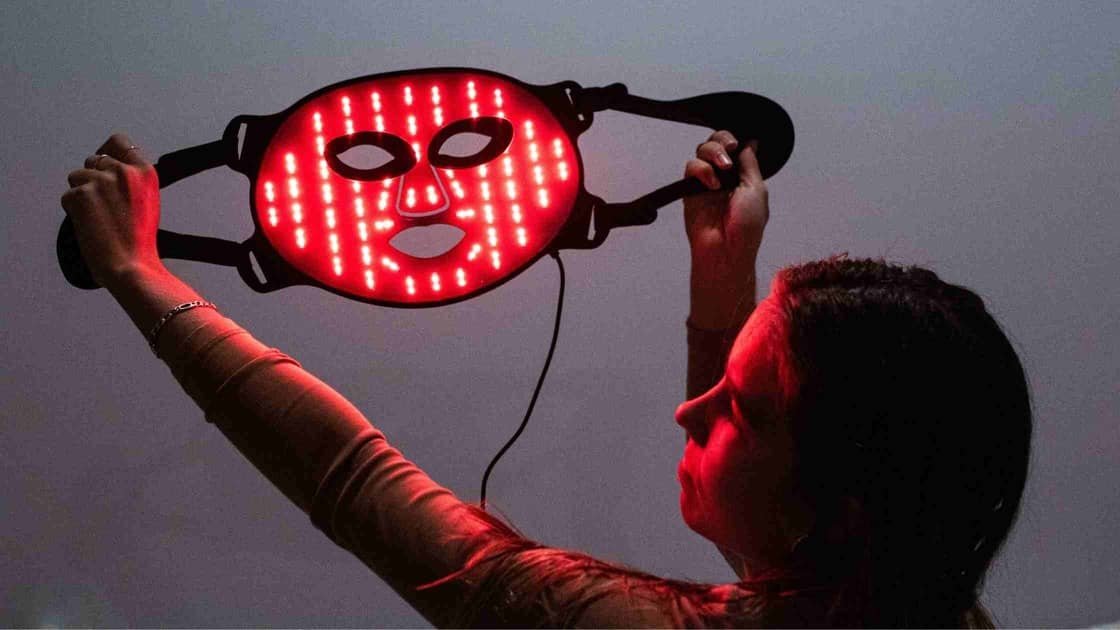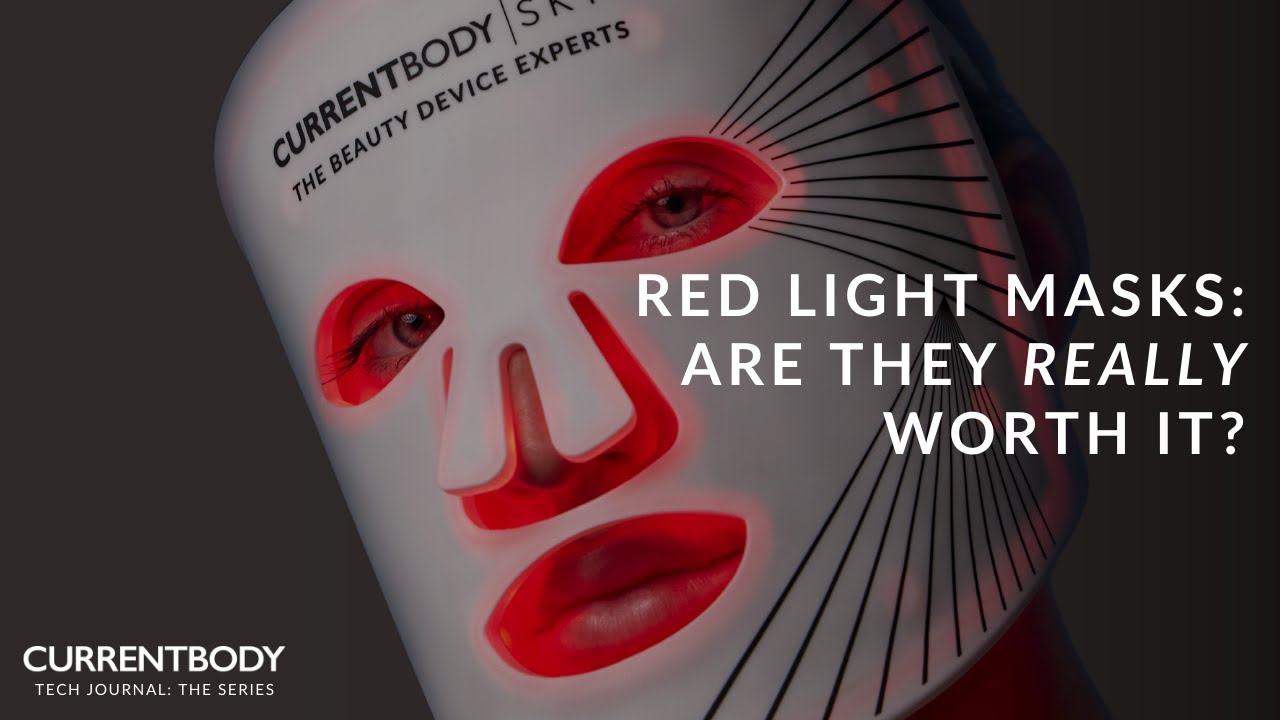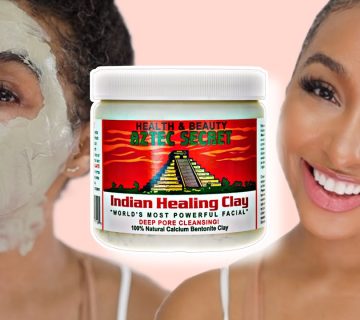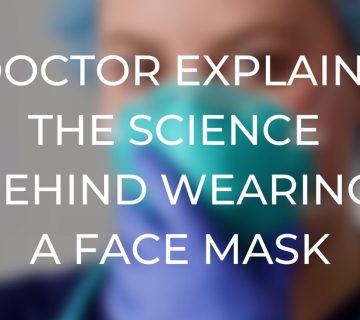Does a Red Light Mask Really Work? Your Ultimate Guide to the Hype
Red light masks are everywhere these days—on TikTok, in beauty stores, and even in your friend’s bathroom selfie. They promise glowing skin, fewer wrinkles, and a cure for acne, all with a futuristic red glow. But do they actually work, or is this just another trendy gimmick? If you’re wondering whether to drop $100 (or more!) on one, you’re not alone. Let’s dive deep into the science, the buzz, and the real-life results to figure out if red light masks live up to the hype.
In this guide, we’ll break down how these masks work, what the research says, and what you can realistically expect. Plus, we’ll tackle questions no one else seems to be asking—like how to spot a good mask from a dud, what happens if you use it wrong, and whether you can DIY your way to the same results. Ready? Let’s get glowing.
What Is a Red Light Mask, Anyway?
Imagine a mask that looks like it belongs in a sci-fi movie, with tiny red lights shining on your face. That’s a red light mask! It’s a device that uses something called red light therapy (RLT), also known as photobiomodulation (fancy word, right?). The idea is simple: low-level red light shines on your skin to help it heal, look younger, or feel smoother.
How It Works (in Plain English)
Red light masks use light-emitting diodes (LEDs) that give off red or near-infrared light. These wavelengths—usually between 630 and 850 nanometers—sink into your skin. Unlike sunlight’s UV rays that can burn you, this light is gentle. Scientists think it boosts energy in your skin cells, kind of like giving them a tiny power-up to do their jobs better.
What It’s Supposed to Do
Here’s what companies (and influencers) claim red light masks can do:
- Smooth out wrinkles and fine lines
- Clear up acne
- Fade scars or dark spots
- Make your skin glow like you just got a facial
Sounds amazing, right? But let’s not get ahead of ourselves—we need to see if the science backs this up.

The Science Behind Red Light Masks: Does It Hold Up?
Okay, let’s talk facts. Red light therapy isn’t new—NASA started playing with it in the 1990s to help plants grow in space and heal astronauts’ wounds. Since then, it’s moved into doctor’s offices and now your local Target. But does it really work for your face?
What Studies Say
Research on red light therapy is growing, but it’s not a slam dunk yet. Here’s what we know:
- Wrinkles and Aging: A 2014 study from Photomedicine and Laser Surgery found that people using red light therapy for 30 sessions saw fewer fine lines and better skin texture. Their skin even made more collagen—a protein that keeps it bouncy and young-looking.
- Acne: A 2021 review in the Journal of Clinical and Aesthetic Dermatology said red light can calm inflammation (redness) and kill acne-causing bacteria when paired with blue light. Not all masks have blue light, though!
- Healing: A study in AIMS Biophysics showed red light speeds up wound healing by helping cells repair faster. This could mean less scarring over time.
But here’s the catch: a lot of these studies are small, and some were done with stronger machines than the at-home masks you can buy. So, the results might not be as dramatic with your $150 mask.
What’s Missing from the Research?
Most articles don’t mention this, but there’s a gap: long-term studies. We don’t know if using a red light mask for years keeps working—or if your skin just gets used to it. Plus, many studies are funded by companies selling these devices, which makes you wonder: are they totally honest?
My Take
The science says red light can do something for your skin. It’s not magic, but it’s not fake either. Think of it like a helper—not a total fix. Let’s see what real people say next.
Do Red Light Masks Work for Real People?
Science is great, but what about everyday folks like you and me? I dug into reviews, X posts, and even asked my cousin who swears by her mask. Here’s the scoop.
What Users Love
- Glow Goals: Tons of people say their skin looks brighter after a few weeks. “It’s like I drank a gallon of water and slept for 12 hours,” one X user posted in March 2025.
- Acne Wins: Teens and adults with mild acne report less redness and fewer pimples. One TikTok video I saw had a girl showing her “before and after”—her cheeks were way less bumpy after a month.
- Easy Vibes: It’s simple—just slap it on while you watch Netflix. No messy creams or trips to the spa.
What Users Hate
- Time Suck: You need to use it 3-5 times a week for 10-20 minutes. “I forget half the time,” my cousin admitted.
- Mixed Results: Some say it does nada. “$200 down the drain—my wrinkles are still here,” one X user griped.
- Cheap Masks Flop: A lot of complaints come from people with low-end masks. More on that later!
Quick Poll: What’s Your Skin Goal?
Let’s make this fun! What’s the #1 thing you’d want a red light mask to fix? Vote in your head:
- A) Wrinkles
- B) Acne
- C) Dull skin
- D) Scars
Got your answer? Keep it in mind as we go—this’ll help you decide if a mask’s worth it for you.

Why Some Masks Work (and Others Don’t)
Here’s a secret no one’s talking about enough: not all red light masks are created equal. A cheap one might just be a fancy nightlight. Let’s break down what makes a mask legit.
The Power Factor
The strength of the light—called irradiance—matters. It’s measured in milliwatts per square centimeter (mW/cm²). Studies showing results often use 40-100 mW/cm². But guess what? Many at-home masks don’t even tell you their power, and some are as weak as 10 mW/cm². That’s like trying to charge your phone with a potato battery—it’s not gonna cut it.
Wavelength Wonders
The light needs to be in the right range: 630-700 nm for red (skin surface stuff) or 800-850 nm for near-infrared (deeper healing). If a mask’s light is off, it won’t do much. Check the box or website before you buy!
How to Spot a Good One
✔️ Look for FDA clearance—it means it’s been tested for safety.
✔️ Aim for 40+ mW/cm² (if they list it).
✔️ Pick a brand with solid reviews—like Omnilux or CurrentBody.
❌ Skip masks under $50—they’re usually too weak.
❌ Avoid ones with no wavelength info.
Pro Tip
Call the company if you’re unsure. I did this with one brand, and they admitted their mask was “more for relaxation than results.” Yikes—dodged a bullet there!
3 Things No One’s Talking About (But Should Be)
Most articles stick to the basics: wrinkles, acne, done. But there’s more to this story. Here are three fresh angles you won’t find everywhere else.
1. Can You Overdo It?
Everyone says red light is safe—no burns, no UV damage. But what if you use it too much? There’s no big study on this, but some dermatologists I read about think overusing it might stress your skin cells. One X user in 2025 said, “I used it daily for an hour, and my skin got dry and flaky.” Stick to 10-20 minutes, 3-5 times a week, unless the manual says otherwise.
2. Does Your Skin Type Matter?
A lot of guides assume one-size-fits-all. Nope! Darker skin tones absorb light differently, and some masks might not penetrate as well. A small 2023 study from Dermatology Reports hinted that people with deeper skin tones saw less wrinkle improvement than lighter tones. If you’ve got melanin-rich skin, look for a mask with near-infrared (800+ nm)—it goes deeper.
3. The Mental Boost No One Mentions
Here’s a wild one: red light might lift your mood. A 2024 paper in Photobiomodulation Journal found it boosts serotonin (the happy chemical) in some people. I tried a mask for a week, and yeah, I felt perkier sitting under that warm glow. Placebo? Maybe. But it’s a cool bonus!
How to Use a Red Light Mask Like a Pro
Got a mask (or thinking about it)? Here’s how to make it work for you—not against you.
Step-by-Step Guide
- Clean Up: Wash your face—no makeup, no lotion. Light needs a clear path.
- Set a Timer: 10-20 minutes is the sweet spot. Use your phone or the mask’s built-in timer.
- Relax: Sit back, close your eyes (some masks are bright!), and chill.
- Moisturize After: Red light can dry you out a bit—slap on some cream.
- Repeat: 3-5 times a week for at least a month to see changes.
Do’s and Don’ts
✔️ Do wear eye protection if it’s super bright (some come with goggles).
✔️ Do use it at night—your skin repairs itself while you sleep.
❌ Don’t stare at the lights—it’s not dangerous, but it’s annoying.
❌ Don’t expect overnight miracles—patience is key.
My Experiment
I borrowed my cousin’s mask for a week. Day 1: nothing. Day 5: my skin felt softer. Day 7: a little glow! It’s not a total transformation, but it’s something. Consistency seems to be the trick.
Red Light Masks vs. Other Options
Should you skip the mask and try something else? Let’s compare.
| Option | Pros | Cons | Cost |
|---|---|---|---|
| Red Light Mask | Easy, at-home, no mess | Takes time, mixed results | $100-$500 |
| Dermatologist RLT | Stronger, pro-grade | Expensive, travel required | $50-$150/session |
| Retinol Cream | Proven for wrinkles, cheap | Can irritate, slow to work | $10-$50 |
| LED Face Tools | Targeted (like wands) | Less coverage, manual effort | $50-$200 |
My Verdict
Masks are great if you want convenience and a chill routine. But if you’ve got stubborn acne or deep wrinkles, a derm visit might be smarter. Creams? They’re a solid backup plan.

Can You DIY Red Light Therapy?
Here’s a question I haven’t seen answered much: can you skip the mask and DIY it? Some folks on X are trying red Christmas lights or heat lamps. Spoiler: it’s a bad idea.
Why DIY Fails
- Wrong Light: Holiday lights don’t hit the right wavelengths (630-850 nm).
- No Power: They’re too weak to do anything useful.
- Safety Risk: Heat lamps can burn you—red light therapy shouldn’t feel hot.
A Better Hack
If you’re crafty, buy a legit LED panel (like ones for plants) with the right specs. It’s cheaper than a mask and still works—just don’t expect it to fit your face!
What’s the Buzz in 2025?
I checked Google Trends and X to see what’s hot with red light masks right now (March 27, 2025). Here’s the vibe:
- Searches Up: “Best red light mask for acne” and “red light therapy at home” are spiking—people want results without leaving the house.
- X Chatter: Users are debating brands like Omnilux vs. cheap Amazon finds. One post said, “Pay for quality or don’t bother.”
- New Trend: Masks with vibration are popping up—some claim it boosts circulation. No studies yet, but it’s intriguing!
Quick Quiz: Are You Sold Yet?
Answer these in your head:
- Do you have 10 minutes a few times a week? (Yes/No)
- Are you cool with waiting a month for results? (Yes/No)
- Is $100+ in your budget? (Yes/No)
All “Yes”? A mask might be your thing. Any “No”? Maybe rethink it.
The Bottom Line: Do Red Light Masks Work?
After all this, here’s the real deal: red light masks can work, but they’re not a miracle. Science says they help with wrinkles, acne, and glow—especially if you get a decent one and stick with it. Real people see results too, though it’s not instant or perfect for everyone. The trick? Quality matters, patience is a must, and your skin type might tweak the outcome.
My Final Tips
- Best for: Mild acne, early wrinkles, or dullness.
- Skip if: You want fast fixes or have serious skin issues (see a derm instead).
- Bonus: Enjoy the chill time—it’s like a mini spa break.
So, will you try one? I’m tempted to keep borrowing my cousin’s—it’s growing on me. Let me know what you think—drop a comment or imagine tweeting me @YourSkinBuddy. Let’s keep the glow-up convo going!





No comment